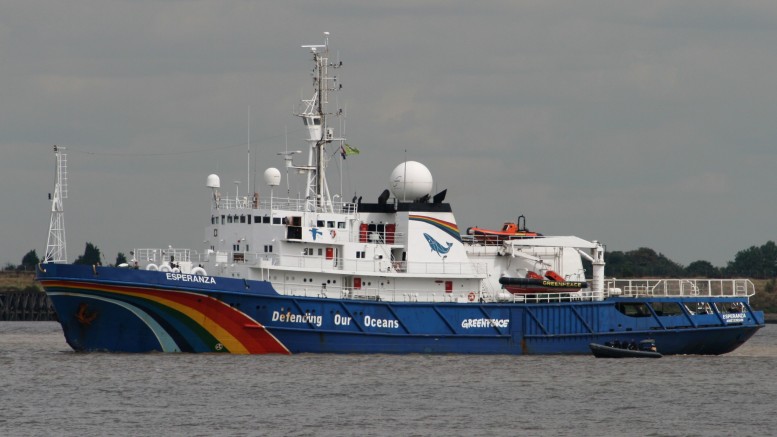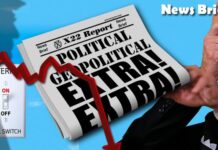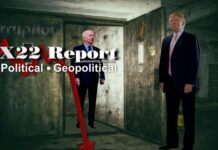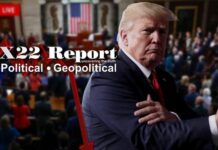
WRITTEN BY: PATRICK MOORE,
PHD, GLOBAL WARMING POLICY FOUNDATION
Published: OCTOBER 30, 2015
Should We Celebrate Carbon Dioxide?
My Lords and Ladies, Ladies and Gentlemen.
Thank you for the opportunity to set out my views on climate change. As I have stated publicly on many occasions, there is no definitive scientific proof, through real-world observation, that carbon dioxide is responsible for any of the slight warming of the global climate that has occurred during the past 300 years, since the peak of the Little Ice Age. If there were such a proof through testing and replication it would have been written down for all to see.
The contention that human emissions are now the dominant influence on climate is simply a hypothesis, rather than a universally accepted scientific theory. It is therefore correct, indeed verging on compulsory in the scientific tradition, to be skeptical of those who express certainty that “the science is settled” and “the debate is over”.
But there is certainty beyond any doubt that CO2 is the building block for all life on Earth and that without its presence in the global atmosphere at a sufficient concentration this would be a dead planet. Yet today our children and our publics are taught that CO2 is a toxic pollutant that will destroy life and bring civilization to its knees. Tonight I hope to turn this dangerous human-caused propaganda on its head. Tonight I will demonstrate that human emissions of CO2 have already saved life on our planet from a very untimely end. That in the absence of our emitting some of the carbon back into the atmosphere from whence it came in the first place, most or perhaps all life on Earth would begin to die less than two million years from today.
But first a bit of background.
I was born and raised in the tiny floating village of Winter Harbour on the northwest tip of Vancouver Island, in the rainforest by the Pacific. There was no road to my village so for eight years myself and a few other children were taken by boat each day to a one-room schoolhouse in the nearby fishing village. I didn’t realize how lucky I was playing on the tide flats by the salmon-spawning streams in the rainforest, until I was sent off to boarding school in Vancouver where I excelled in science. I did my undergraduate studies at the University of British Columbia, gravitating to the life sciences – biology, biochemistry, genetics, and forestry – the environment and the industry my family has been in for more than 100 years. Then, before the word was known to the general public, I discovered the science of ecology, the science of how all living things are inter-related, and how we are related to them. At the height of the Cold War, the Vietnam War, the threat of all-out nuclear war and the newly emerging consciousness of the environment I was transformed into a radical environmental activist. While doing my PhD in ecology in 1971 I joined a group of activists who had begun to meet in the basement of the Unitarian Church, to plan a protest voyage against US hydrogen bomb testing in Alaska.
We proved that a somewhat rag-tag looking group of activists could sail an old fishing boat across the north Pacific ocean and help change the course of history. We created a focal point for the media to report on public opposition to the tests.
When that H-bomb exploded in November 1971, it was the last hydrogen bomb the United States ever detonated. Even though there were four more tests planned in the series, President Nixon canceled them due to the public opposition we had helped to create. That was the birth of Greenpeace.
Flushed with victory, on our way home from Alaska we were made brothers of the Namgis Nation in their Big House at Alert Bay near my northern Vancouver Island home. For Greenpeace this began the tradition of the Warriors of the Rainbow, after a Cree Indian legend that predicted the coming together of all races and creeds to save the Earth from destruction. We named our ship the Rainbow Warrior and I spent the next fifteen years in the top committee of Greenpeace, on the front lines of the environmental movement as we evolved from that church basement into the world’s largest environmental activist organization.
Next we took on French atmospheric nuclear testing in the South Pacific. They proved a bit more difficult than the US nuclear tests. It took years to eventually drive these tests underground at Mururoa Atoll in French Polynesia. In 1985, under direct orders from President Mitterrand, French commandos bombed and sank the Rainbow Warrior in Auckland Harbour, killing our photographer. Those protests continued until long after I left Greenpeace. It wasn’t until the mid-1990s that nuclear testing finally ended in the South Pacific, and it most other parts of the world as well.
Going back to 1975, Greenpeace set out to save the whales from extinction at the hands of huge factory whaling fleets. We confronted the Soviet factory whaling fleet in the North Pacific, putting ourselves in front of their harpoons in our little rubber boats to protect the fleeing whales. This was broadcast on television news around the world, bringing the Save the Whales movement into everyone’s living rooms for the first time. After four years of voyages, in 1979 factory whaling was finally banned in the North Pacific, and by 1981 in all the world’s oceans.
In 1978 I sat on a baby seal off the East Coast of Canada to protect it from the hunter’s club. I was arrested and hauled off to jail, the seal was clubbed and skinned, but a photo of me being arrested while sitting on the baby seal appeared in more than 3000 newspapers around the world the next morning. We won the hearts and minds of millions of people who saw the baby seal slaughter as outdated, cruel, and unnecessary.
Why then did I leave Greenpeace after 15 years in the leadership? When Greenpeace began we had a strong humanitarian orientation, to save civilization from destruction by all-out nuclear war. Over the years the “peace” in Greenpeace was gradually lost and my organization, along with much of the environmental movement, drifted into a belief that humans are the enemies of the earth. I believe in a humanitarian environmentalism because we are part of nature, not separate from it. The first principle of ecology is that we are all part of the same ecosystem, as Barbara Ward put it, “One human family on spaceship Earth”, and to preach otherwise teaches that the world would be better off without us. As we shall see later in the presentation there is very good reason to see humans as essential to the survival of life on this planet.
Read More HERE








Australia PM adviser says climate change is ‘UN-led ruse to establish new world order
http://www.telegraph.co.uk/news/worldnews/australiaandthepacific/australia/11591193/Australia-PM-advisor-says-climate-change-a-UN-led-ruse.html
French Mathematicians Blast UN’s ‘Costly & Pointless Crusade’ Against Global Warming
http://www.cnsnews.com/news/article/barbara-hollingsworth/french-mathematicians-blast-uns-absurd-crusade-against-global
Dork, I looked into this challenge, and also ended up being struggle to copy that. Once you were being emailing often the photo, have been an individual capable to start to see the photo within your concept? William
coque iphone https://kn.teles-relay.com/?p=329045